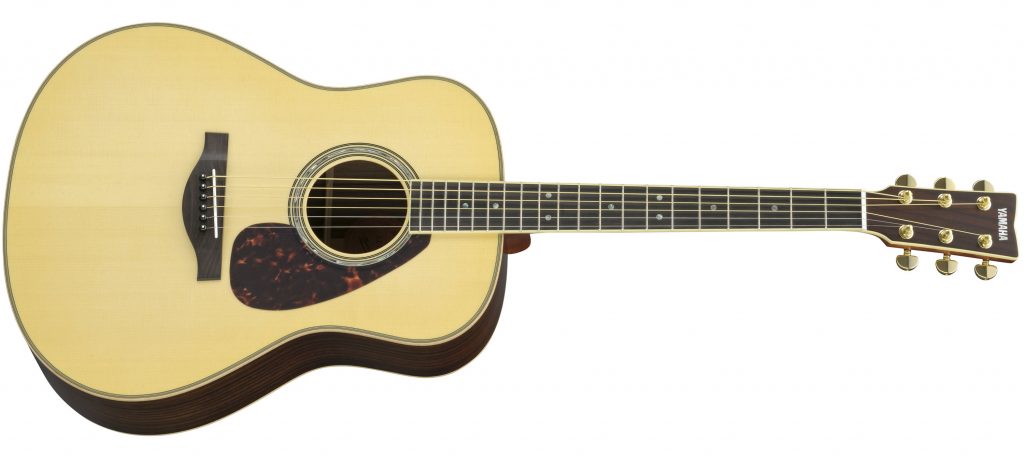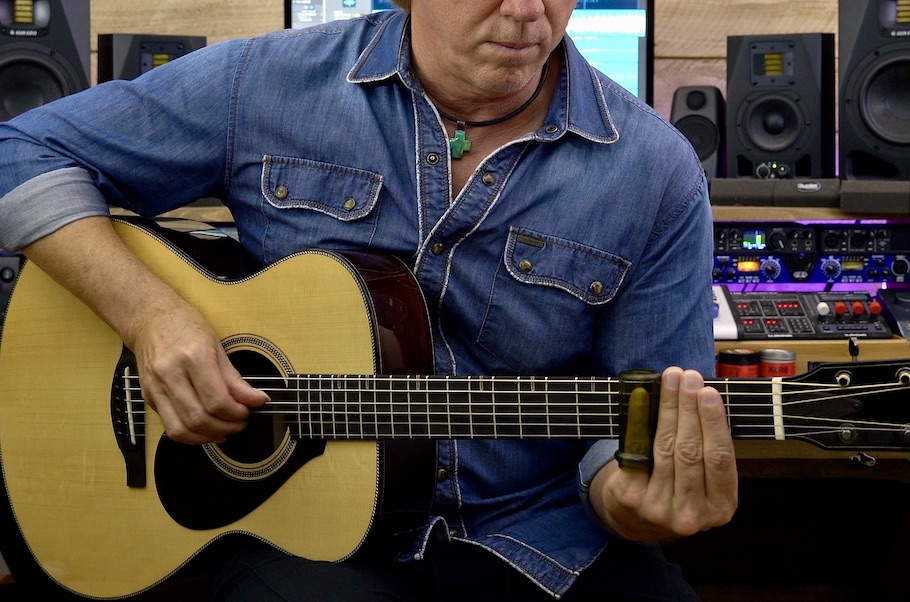Acoustic Guitar Tonality
What goes into great acoustic guitar tone?
Guitar players have long thought that “tone” is subjective, which it certainly can be. When it comes to acoustic guitars, there are a variety of factors involved, including the type of wood used to make the instrument and its physical construction, as well as the kinds of strings you put on it, the use of a pick or fingers, and of course the style, approach and feel of the player themselves.
Let’s take a closer look at the most important factors in getting great acoustic guitar tone.
Tonewoods
Like electric guitars and basses, most acoustic guitars are crafted from wood, and every type of wood has its own tonal properties, hence the term tonewood. That’s largely because each type of wood has different weight and density characteristics, both of which play a major role in the overall tone of the guitar.
The top of an acoustic guitar is what resonates the most sound into and out of the instrument. Spruce, which is a lightweight, highly resonant wood, is commonly used for acoustic guitar tops, as it delivers a bright and clear tonality. Most Yamaha FG800 and FS800 Series acoustic guitars feature solid spruce tops, except for the FG850 and FS850 models, which have solid mahogany tops for a slightly warmer and darker tone. Other tonewoods used in acoustic guitar tops include rosewood, maple and koa.


Rosewood and mahogany are commonly used for the backs of acoustic guitars. The backs and sides of a guitar combine with the top to create the resonance and projection of the instrument, thus adding to the overall tonality. Acoustic guitar fretboards (sometimes called “fingerboards”) are usually made of either rosewood or ebony; the latter delivers a somewhat brighter sound.
Technology can also play a part in tone. Yamaha L Series steel-string and NCX2000R/NCX2000FM nylon-string acoustic guitars, for example, feature Acoustic Resonance Enhancement (A.R.E) treatment, which is a technology developed by Yamaha that adds an “aged” sound to the wood of the guitar. This is achieved by maintaining tight control over the humidity, temperature and atmospheric pressure of the wood, altering its molecular properties to deliver a resonant, pleasing tonal quality similar to that of a vintage guitar that is many years old.

There is no right or wrong when it comes to the choice of woods used in an acoustic guitar since each combination will have its own sonic character and tonality. It comes down to personal preference.
Bracing
Bracing is another significant factor in acoustic guitar tone. This refers to the strips of wood that are attached to the inside of the top, helping to give the instrument strength and sturdiness. Heavier braces deliver a different tone than lighter ones, and some braces are carved or scalloped for additional lightness. Different types of designs include X-bracing, Fan bracing, V-Class bracing and Ladder bracing. As an example, Yamaha APX Series acoustics feature non-scalloped X-Type bracing to maximize resonance for a full, natural tone.
Shape, Size and Style
The design and style of the instrument also has an impact on tonality. My first acoustic guitar, purchased right off the rack at the local record store, was a Yamaha FG-45. It was a 3/4-sized “parlor” guitar with a spruce top and a rosewood fretboard. It was small, but it projected a lot of sound!
Typical steel-string acoustic guitar sizes include (from largest to smallest) jumbo, traditional western, dreadnought, concert and parlor, with classical nylon-string guitars ranging in size from roughly concert to parlor. Jumbo guitars tend to output more sound and have more natural reverberation simply because they are bigger and therefore have more wood. However, medium- and smaller-sized acoustic guitars, if properly made, do not lack in projection or tone. In fact, many players would choose these guitars because the sound can be tighter and more focused.


Some acoustic guitars, like the URBAN Guitar by Yamaha (designed in collaboration with none other than Keith Urban), feature a cutaway on the body, which gives the player easier access to the upper frets. In some cases, cutaway guitars may have a slightly different tone than non-cutaways, with a touch less bass due to the fact that there is literally less guitar body.

Pick or Fingerstyle
One of the top factors involved in acoustic guitar tonality is whether you choose to play with a pick or with your fingers — and this is the case regardless of the general quality of the instrument itself.
Using a pick will provide extra clarity and attack to each note or chord strummed. In fact, even the type of pick you use will change the tone or character of the sound. I own a variety of pick types made from synthetic materials like plastic, as well as those made from bone and metal, with metal delivering the brightest tone. There are also picks with different thicknesses. Thinner picks will add a touch more “air” (treble) to the notes, whereas thicker picks will deliver a sound with more mids and lows.
Playing with your fingers softens the sound since there is no attack coming from a pick, although long (but well-manicured) fingernails can act as surrogate picks, allowing you to play with a hybrid finger/fingernail approach.
A related factor is where your strumming hand is positioned. Play closer to the bridge and you’ll get a brighter sound; play closer to the neck and the sound will be more mellow.
Strings
The type of strings you put on your guitar makes a big difference in the overall tone too. Play the exact same chord on a steel-string and on a nylon-string and they will sound very different!
A steel-string guitar will have a brighter, crisper sound, even if played with your fingers; nylon-string guitars (either classical or folk) will have a much softer, rounder sound, even if played with a pick. It’s purely the nature of the strings. Steel strings are traditionally made from a steel core wire with some kind of outer wrap, which could be bronze or a phosphor-bronze composite. Classical guitar strings are made of nylon filament or a nylon core with a bronze or silver wire wrap.
In addition, the thicker the strings, the thicker the tone. String thickness is called gauge; heavier-gauge strings can be tough on the fingers, but they deliver a fuller sound compared to thin-gauge strings. Depending upon your hand strength, you may need to compromise; again, this is a matter of personal preference.
The TransAcoustic Experience
Because by their very nature acoustic guitars don’t require amplification in order to be heard (unlike electric guitars), the sound of an amplifier doesn’t normally play a role in acoustic guitar tonality. (That said, there are acoustic-electric guitars like Yamaha A Series and LL16 models, that have built-in pickups and so can be optionally amplified without the need for a microphone.)

For the same reason, effects aren’t usually a major factor in acoustic guitar tonality — that is, unless you’re lucky enough to be playing a Yamaha TransAcoustic guitar, which utilizes amazing Yamaha technology that actually creates reverb and chorus effects in the air … no amp needed.


I own both Yamaha FG-TA steel-string and Yamaha CG-TA nylon-string TransAcoustic guitars. As you can hear in the audio clips below, they sound very different from one another, even when playing the same chords or notes. Here’s the FG-TA:
And here’s the CG-TA, playing the exact same chords and notes:
The audio clips below demonstrate how the addition of their onboard effects can have an impact on their tone. First, the FG-TA with a touch of the onboard reverb and chorus added:
Finally, here’s the sound of the CG-TA with the same onboard effects:
As you can see (and hear), acoustic guitar tone is a combination of the physical construction of the instrument and personal playing style — the better the instrument and the more accomplished you are as a guitarist, the easier it is to get great tonality.















